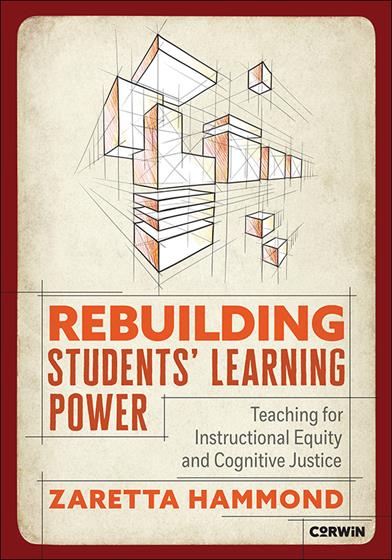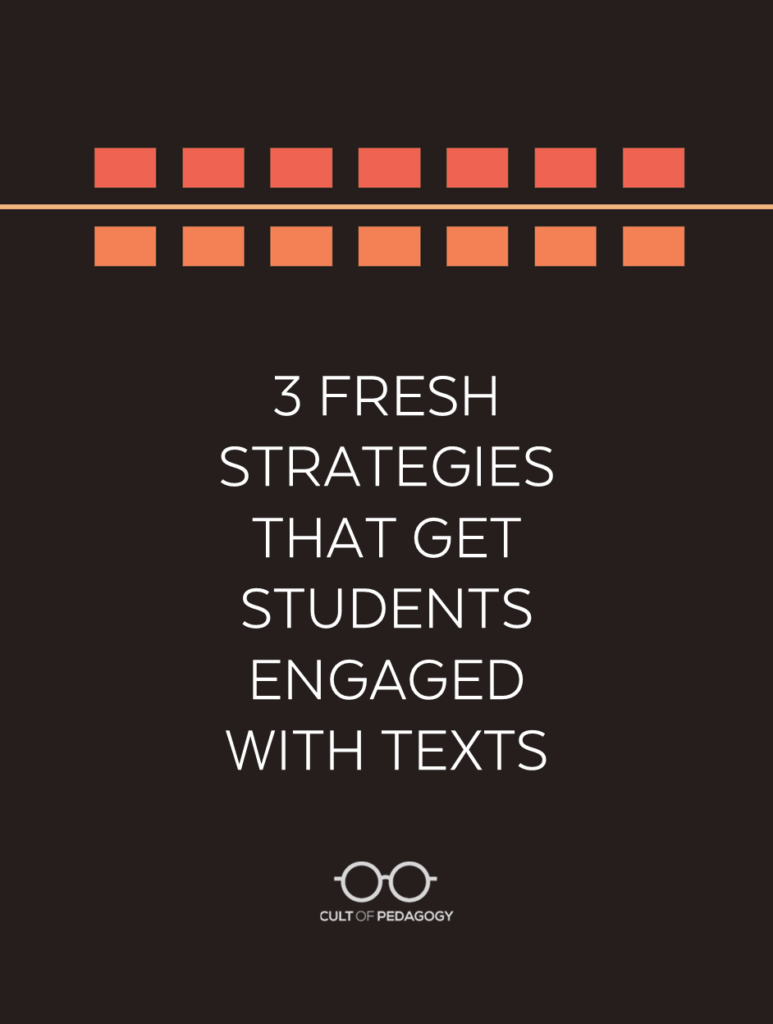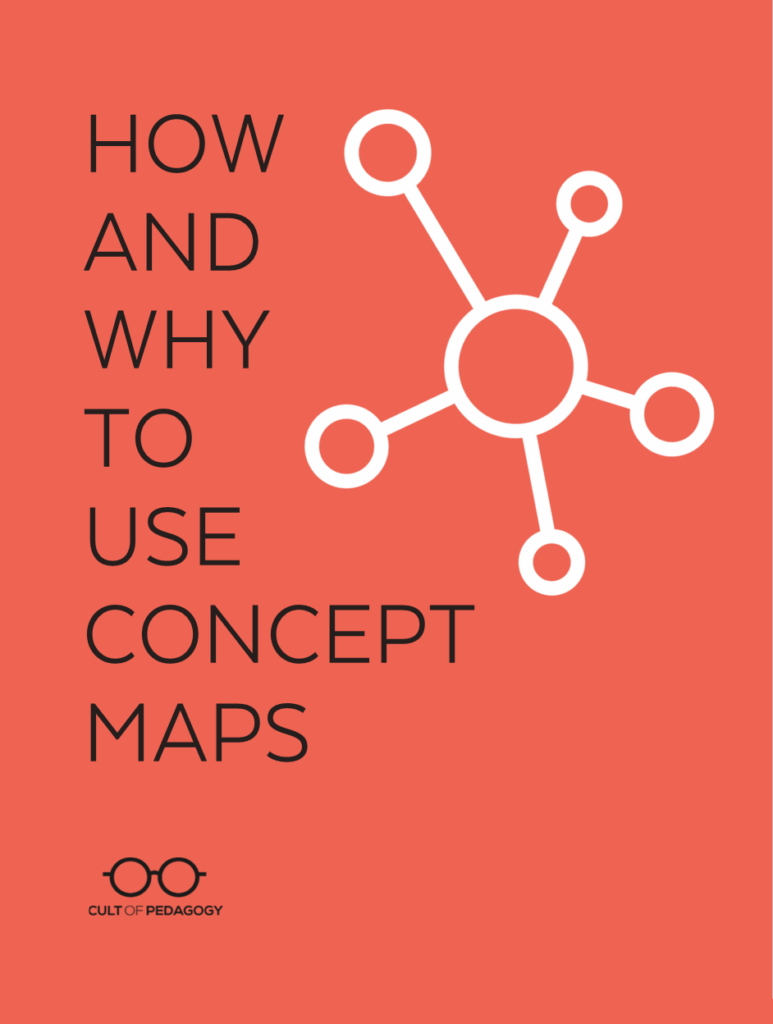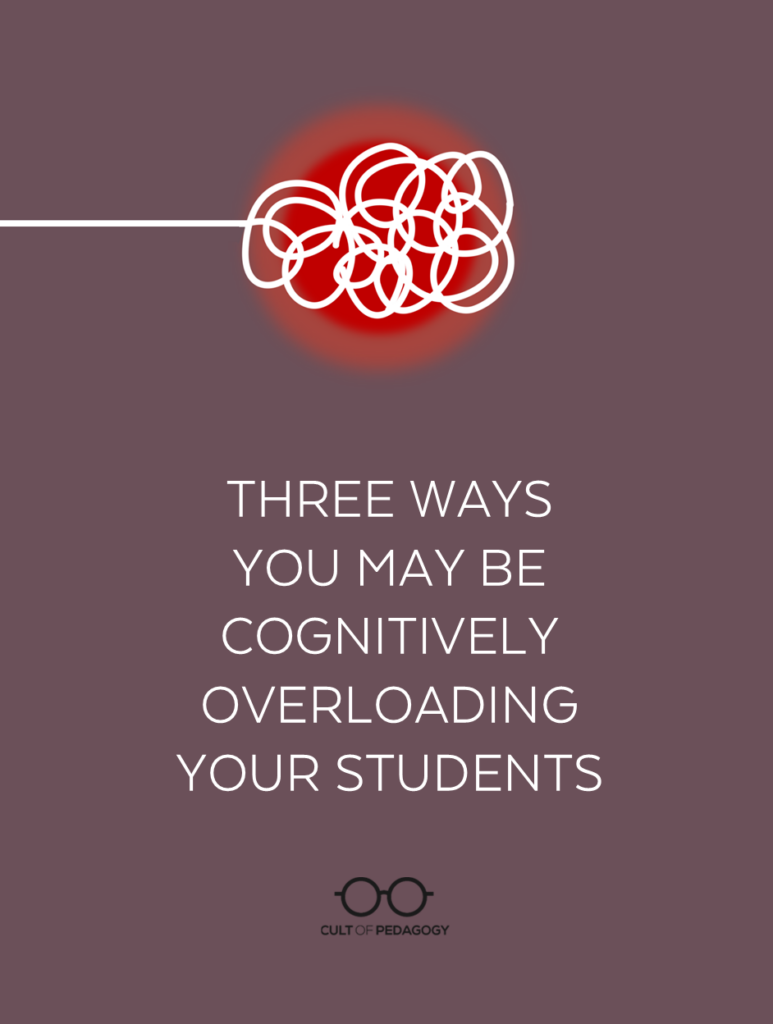We can teach our hearts out, but in the end, only the learner learns. So, how do we get students to own their learning? The post Rebuilding Students’ Learning Power with Learn-to-Learn Skills first appeared on Cult of Pedagogy.

Listen to the interview with Zaretta Hammond:
Sponsored by Foundry10 and SchoolAI
This page contains Bookshop.org links. When you make a purchase through these links, Cult of Pedagogy gets a small percentage of the sale at no extra cost to you. What’s the difference between Amazon and Bookshop.org?
Recently, I was with a team of teachers doing instructional rounds. We’d finished up a 15-minute observation in a classroom and were trying to leave the room quietly. The students were diligently working in groups on the next task the teacher had assigned.
She took it as an opportunity to follow us out.
“I am trying to get them to own their learning,” she said with an exasperated tone. “They are sweet. They do what I ask, but they just won’t own it.”
This is a frustration I hear from teachers all the time. The question it leads them to is How do we get students to own their learning? The simple answer (that’s not always easy) is to coach students in learning how to learn skills. We think that already happens as a byproduct of using popular pedagogical approaches like project-based learning, UDL, or makerspace learning. While these are powerful, evidence-backed practices, we still have to give students explicit tools, techniques, and moves to take full advantage of them.
Despite all our lesson planning, engaging activities, and scaffolded support, we cannot compel students’ brains to begin the information processing cycle. Why? Because learning isn’t up to us, the teacher. It is solely up to the learner. If our teaching doesn’t ignite a student’s intellectual curiosity, if the environment doesn’t feel intellectually safe, or if the student does not have the skills to move new content from the attention, elaboration, and consolidation phases of information processing, then no learning will happen.
We can teach our hearts out, but in the end, only the learner learns. So, how do we get students to own their learning? That’s the question I’m answering in Rebuilding Students’ Learning Power (Corwin, 2025). Rather than simply talking to students about how their brain learns or trying to motivate them, we want to couple these approaches with specific tools and moves that help them become a good information processor that makes learning sticky. We start by offering them a set of learn-to-learn skills.
What Are “Learn-to-Learn” Skills?
Just what are “learn-to-learn” skills? Sounds like something made-up, but it’s a real thing. David Perkins of Harvard’s Project Zero calls it the game of learning. While Ron Berger, founder of EL Education (formerly Expeditionary Learning) calls it the craftsmanship of learning. I like to think of them as the “trade secrets” of learning hiding in plain sight. Through an equity lens, learn-to-learn skills are the hidden curriculum that closes the opportunity gap and moves us toward more equitable academic outcomes.
It’s easy to confuse information processing’s learn-to-learn skills with popular executive function skill building. Executive function skills are more about planning and staying organized as a learner. We do this with binders and study skills. Very important, but won’t improve students’ ability to carry more of the cognitive load.
Let me say a quick thing about skills and moves. Learning how to learn is a set of skills, made up of five individual moves that can be used flexibly by a student depending on the cognitive task. I call them “moves” when introducing them to students. Here’s the distinction:
A move is typically a specific, discrete action or technique — something you execute in a particular moment. Think of a chess move, a dance move, or a wrestling move. It’s concrete and often has a clear beginning and end.
A skill is broader — it’s a developed ability or competency that encompasses understanding, judgment, and the capacity to execute various moves effectively. Skills involve knowledge of when, how, and why to use different moves.
For example, in basketball:
- A crossover dribble is a move.
- Ball handling is a skill that includes knowing various dribbling moves and when to use them.
Skills are what allow you to choose the right moves at the right time and execute them well. You can know a move without having the skill to use it effectively, and you can have great skills while still learning new moves. The relationship is top down and bottom up. Skills are built from practicing moves, but also from developing the judgment and adaptability that transcend any single technique.
So, these five moves constitute a skill set of learning how to process new content so that it’s meaningful and deepens understanding. We want students to learn to use them in an adaptive fashion rather than a strict, linear step by step way.
So, let’s look at each of the five learn-to-learn moves.
The Five Learn-to-Learn Moves
Move 1: Size It Up and Break It Down
The first part of this move asks the student to engage in task analysis: Size up the task. During this process, the learner uses a structured cognitive routine to make sense of what the task is asking him to do. Then comes the second half, Break it Down, which is focused on crafting a plan of attack. The student does his best to break the tasks into the types of cognitive activity it calls for and begins to assess which tools and strategies they will need to complete the task.
The Size It Up/Break It Down move prompts the brain to ask itself a series of decision-making questions as it ignites the information processing cycle.. These questions help the learner identify the appropriate emotional stance necessary as well as make a plan of attack.
- Does this task seem hard? What type of press or stamina will I need? How do I feel about that? (activation of social-emotional disposition)
- How do I need to organize for this task? (activation of metacognitive reflection)
- Have I done this before? Do I already have strategies and tools to use? Will they be helpful in this case? (activation of metastrategic awareness).
Move 2: Scan the Hard Drive
The Scan the Hard Drive move fires the neural pathways that hold the student’s background knowledge (funds of knowledge) in preparation for learning new content. The number one brain rule is that all new learning must be coupled with existing learning.
When a learner is evaluating new information during the attention phase of information processing, the brain begins to scan one’s funds of knowledge (schema) in search of an experience, definition, or concept related to this new content, no matter how tangential.
This move can occur right after the task analysis process of the Size It Up/Break It Down or it can be used anytime the learner is engaged in meaning-making. The student executes this move when encountering information that is new or is confusing.
The Scan the Hard Drive move prompt sends the brain on a scavenger hunt through one’s background knowledge and schema to find what it already knows about the topic or process, no matter how seemingly unrelated that connection is.
- Where have I heard or seen this before?
- This is new, but what is a similar concept or skill that I am familiar with?
- What seems to be the opposite of this?
Move 3: Chew and Remix
The Chew and Remix move is centered around the elaboration phase of information processing. Once a student has activated their schema by scanning the hard drive, they need to actively mix the new content with the related schema they identified. What are they chewing on and remixing? Students are mixing the “new with the known” as they integrate newly presented content into their existing background knowledge.
The very act of chewing results in meaning-making, leading to the remix.
This is the active part of learning that requires productive struggle in the learner’s zone of proximal development (ZPD) to make sense of complex, conflicting or competing information. The process helps them move from surface level learning to deeper learning associated with high levels on Bloom’s taxonomy or Webb’s Depth of Knowledge wheel.
The Chew and Remix move signals the brain to engage the elaboration phase of information processing.
- How is this new content connected to what I already know?
- Does this make sense? What is confusing? How do I figure this out?
- Which cognitive routine will work best right now to help me mix this new content with my funds of knowledge?
Move 4: Engage in Skillful Practice
While the Chew and Remix move focuses on general meaning-making with new content, Skillful Practice is about deepening understanding with core concepts and building automaticity with skills and procedures, especially those involved in math and reading development. This move is focused on deliberate practice to myelinate new neural pathways to build proficiency and automaticity. The student executes this move when there’s a need to adjust how he is applying a move or executing a skill in order to get better – deepening understanding of a historical event or getting proficient with a math formula.
The Skillful Practice move cues the brain to use its metastrategic awareness to identify the weak part of one’s skill execution and zero in on a small, specific move they need to improve. The learner is engaged in repetition with continuous refinement.
- What small change do I need to make to execute this particular part of the task or skill more effectively?
- How can I stretch myself to the edge of my current ability, into my challenge zone?
- Do I need to level up my emotional stamina right now?
- Do I need to use my self-critique tools at this moment to monitor my progress and adjust as needed?
Move 5: Make it Sticky
The Make It Sticky move is focused on strengthening the consolidation phase of information processing and disabling the brain’s natural pruning mechanism that deletes fragile dendrites if new learning isn’t used within twenty-four to forty-eight hours. The task here is to make fragile dendrites into strong neural pathways through application of the new content just learned in different settings.
The student uses this move at the end of a learning episode and within twelve hours after the learning episode has ended. Most often this will be during out of school time. The learner must apply the skill and think about the information to strengthen it and make it sticky to deactivate the brain’s pruning feature.
The Make It Sticky move prompts the brain to revisit the information or task in an applied way within a specific time frame, outside of class. Ways for the student to do this are:
- Use the skill in real life.
- Tell someone about it by reviewing the steps or process.
- During homework time, use retrieval practice, spaced learning, or interleaving to continually revisit the content.

Getting Students to Take Up Learn-to-Learn Skills
The real trick is getting students to take up these moves and use them consistently without constant prompting from the teacher. That’s the hallmark of a cognitively independent learner. Just telling students about these moves or using them as engagement strategies from the front of the room doesn’t result in improved information processing because students aren’t typically paying attention to owning them. Usually they are simply following directions.
For students to own their learning, we have to get them to understand this big idea: You have to be the one working the move. Just like in sports, the coach can demonstrate the move, but you have to pay attention to your own execution and how to correct poor execution.
There are three ways we can start to get students to own their learning, beginning with the five learn-to-learn moves.
1. Initiate them into a cognitive apprenticeship.
Just like carpenters, chefs, and artists become apprentices as part of their learning journey, we have to treat learners in a similar way. Set up the classroom as a cognitive apprenticeship with an onboarding process, skill-building and habit formation phases on the way to mastery of learning how to learn.
The goal of the apprenticeship is to help the student develop the six capacities of a good information processor. During this initiation period, that should last 4-6 weeks, the teacher is explicitly laying out the path to mastery as a learner.
- Map out the journey toward mastery. By laying out the stepping stones, we show students how to level up their learning anchored in what is meaningful to them, not just by measures like learning targets and grades.
- Help students study their mistakes as a way to improve. A big idea for students to grasp early on is that errors provide information about how to change their learning moves.
- Have students bond as a community of learners. We want to build a classroom culture around the craftsmanship of learning where students become a resource to each other.
2. Invite them to revise their learner identity.
As part of their initiation into a cognitive apprenticeship, invite students to think about how they view themselves as learners. Learner identity is an individual’s perception and beliefs about their abilities, their motivations, and their place in the academic world. It is a critical component of belonging in school. Many underperforming students struggle not only with the content, but struggle with their sense of themselves as capable learners. We see this most commonly in math class when students say, “I’m not a math person.”
- Help them rewrite their explanatory story. Think about how you are helping them rewrite or reset their internal narrative (called an explanatory story) about their capacity for doing math (and any other subject, for that matter).
- Practice noticing and naming with them. Peter Johnston in his book, Choice Words: How Our Language Affects Students’ Learning points out that rather than playing cheerleader, we need to help students notice where they are being successful in alignment with their learner identity. Replace the vague and cryptic, “good job” with something that lifts up their effort, like “Oh, I saw how you just did that move here to stretch yourself…”
3. Integrate regular opportunities for reflection.
Give students regular opportunities to talk about and reflect on how they’re progressing in developing their craftsmanship of learning and improving their learning power. Building learning power requires reflection and feedback, just like developing any other skill set. Several times a week, students need to engage in structured instructional conversations that get them to reflect on how they are managing their learning process through mistakes, confusions, and the moves they use to correct them.
- Give them language for talking about learning. Just like apprentices learn the specialized language of their professions, students need to learn the language of learning, not parts of the brain.
- Help them identify and solve their unique choke points and pitfalls. Pitfalls and choke points are the common mistakes learners make repeatedly. These are traps we set up for ourselves because we don’t understand the principles of learning or understand ourselves as a learner. The two are different in important ways.
A choke point is a natural constraint in the information processing cycle. One example is the limited capacity of the brain’s working memory. This is a natural choke point for everyone because of the small number of items the brain can hold at one time (typically 3-5 “chunks” of new content and background knowledge). Another is the short duration it can hold those chunks before forgetting sets in unless the chunks are actively mixed and rehearsed. Every learner has to identify his unique management of these types of choke points and learn to work with these constraints. A pitfall, on the other hand, is a type of self-sabotage. For example, when a student believes cramming by re-reading the night before a test is going to be effective rather than using practices like spaced self-quizzing. Multi-tasking during the process of learning new content is another common pitfall for many students.
- Engage them in metastrategic planning. Engage them in regular instructional conversation in learning conferences. During these meetings, ask them to create a plan for what they will do differently when tackling a similar type of learning challenge in the future.
Creating these conditions and inviting students to take up learn-how-to-learn skills is what it means to teach for instructional equity. These are more than individual strategies to make our lessons more engaging. They are the hidden equity curriculum every student needs to become a truly independent learner. Every student deserves to learn and master the craftsmanship of learning.
Join our mailing list and get weekly tips, tools, and inspiration that will make your teaching more effective and fun. You’ll get access to our members-only library of free downloads, including 20 Ways to Cut Your Grading Time in Half, the e-booklet that has helped thousands of teachers save time on grading. Over 50,000 teachers have already joined—come on in.












